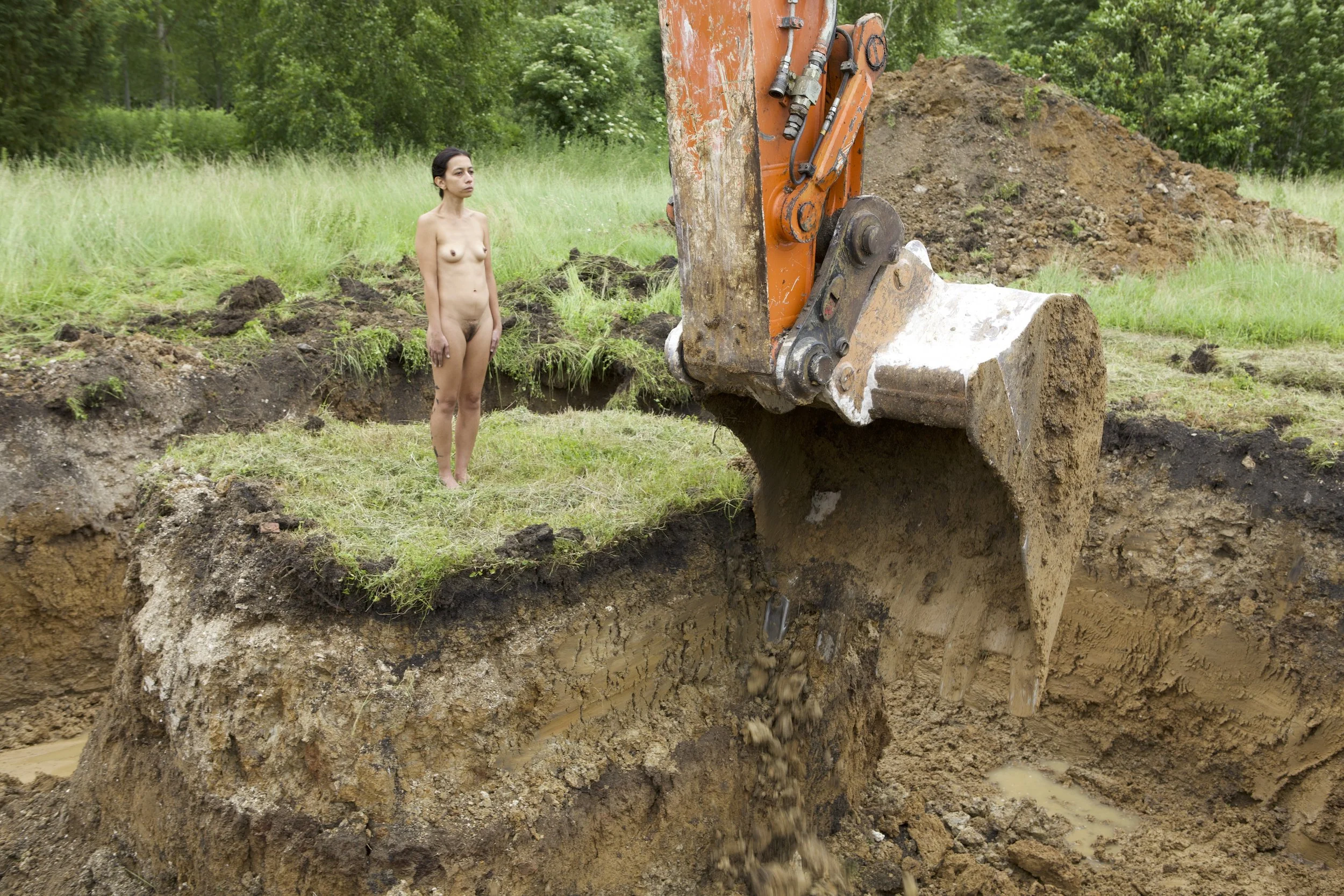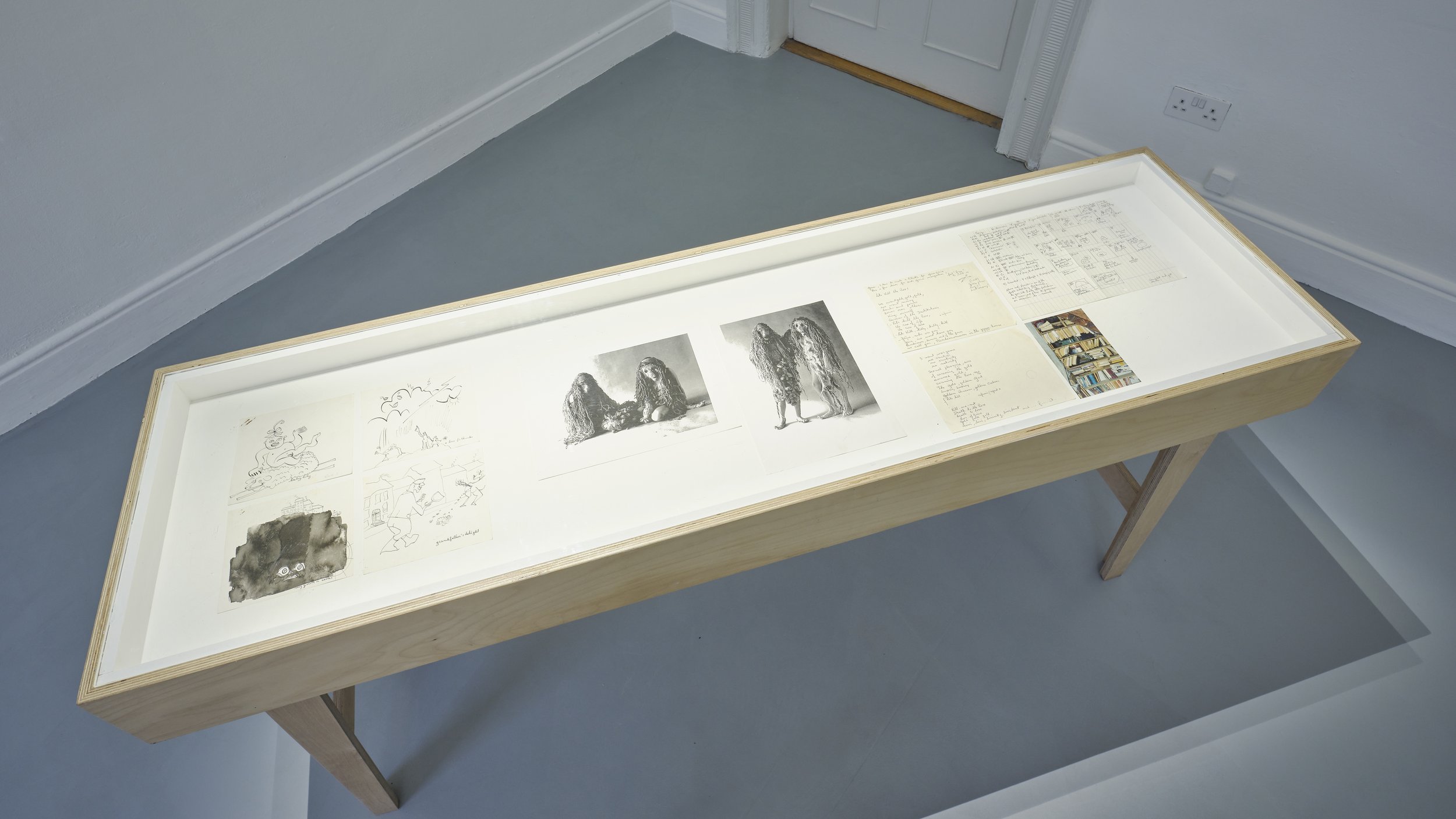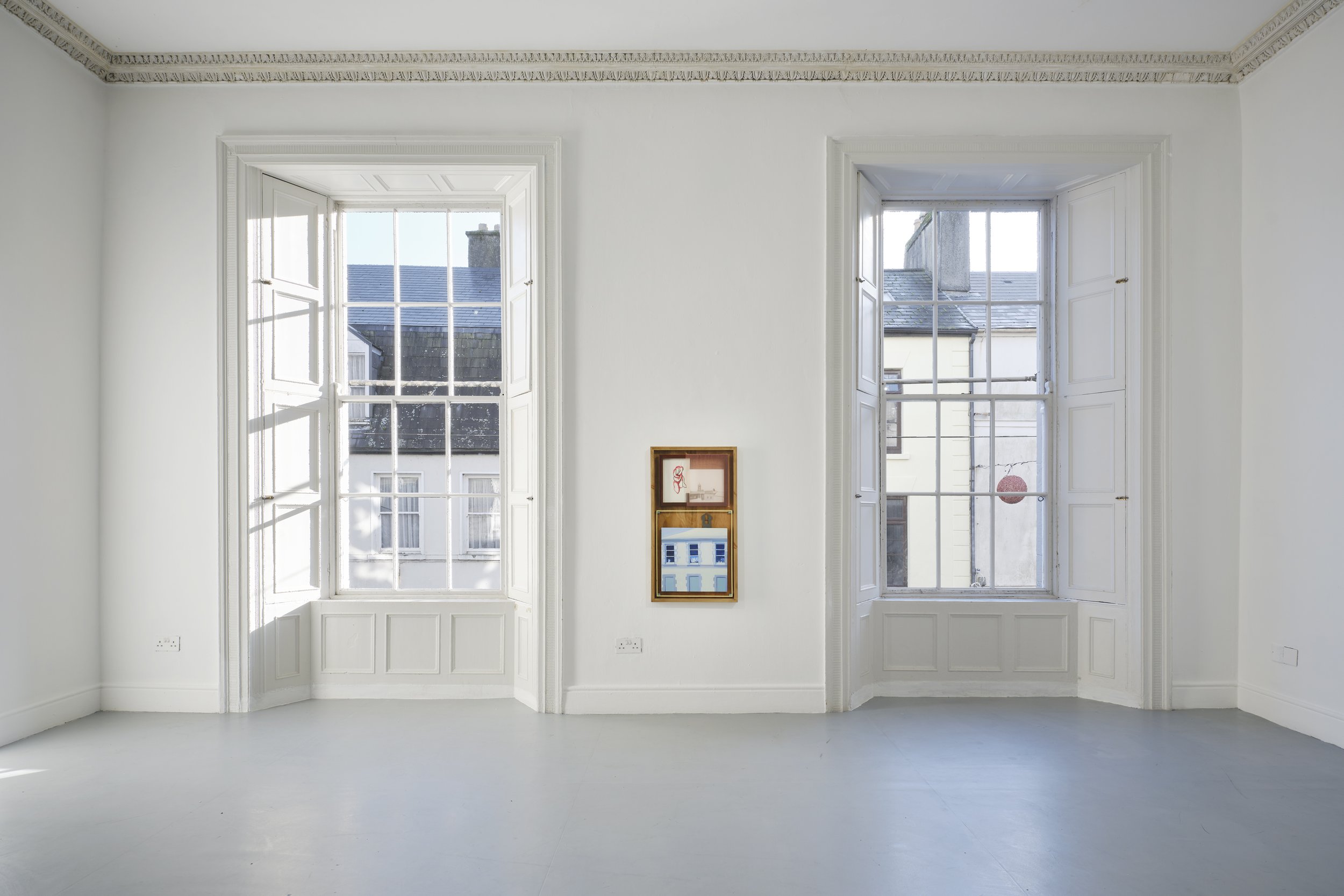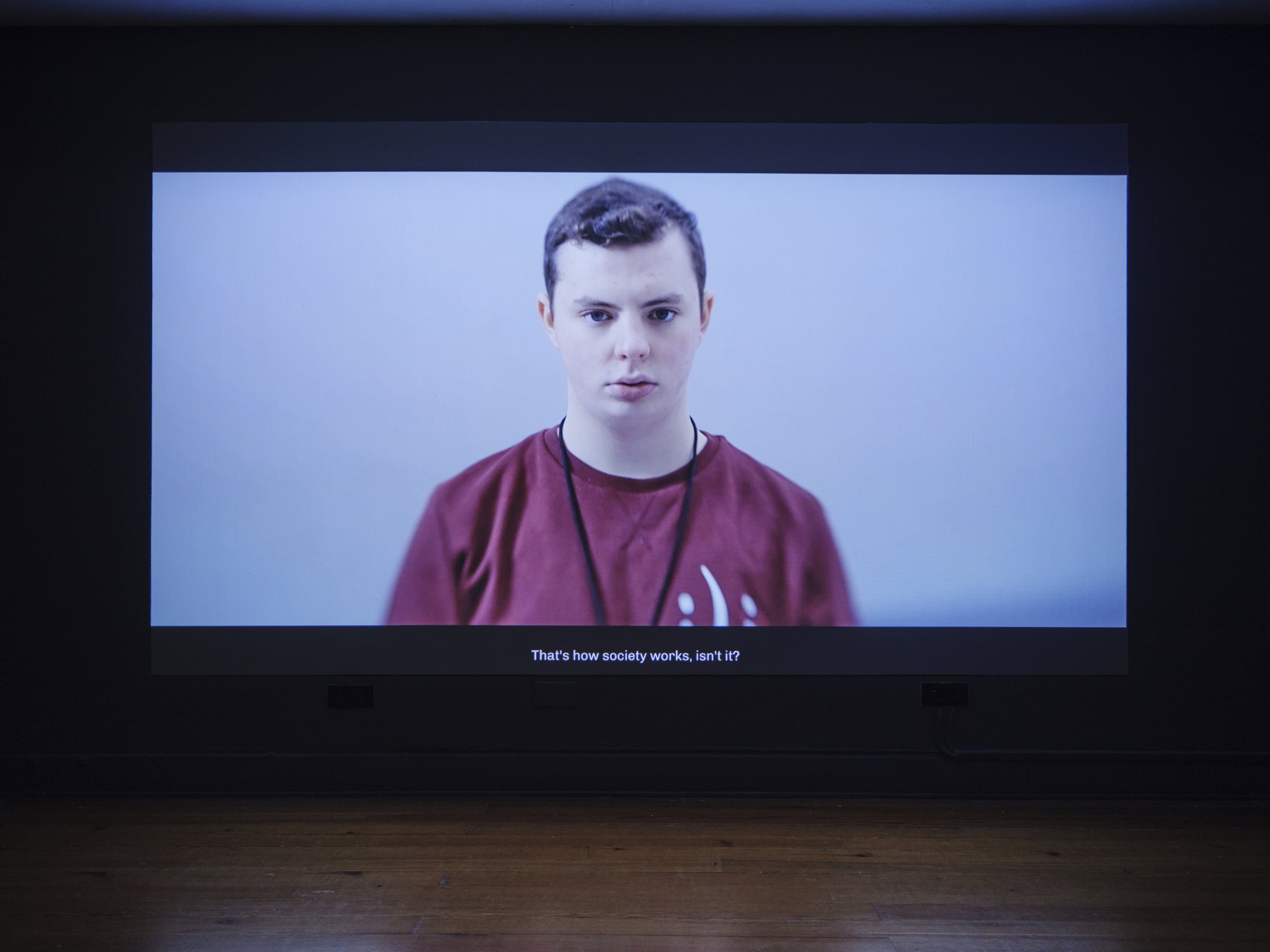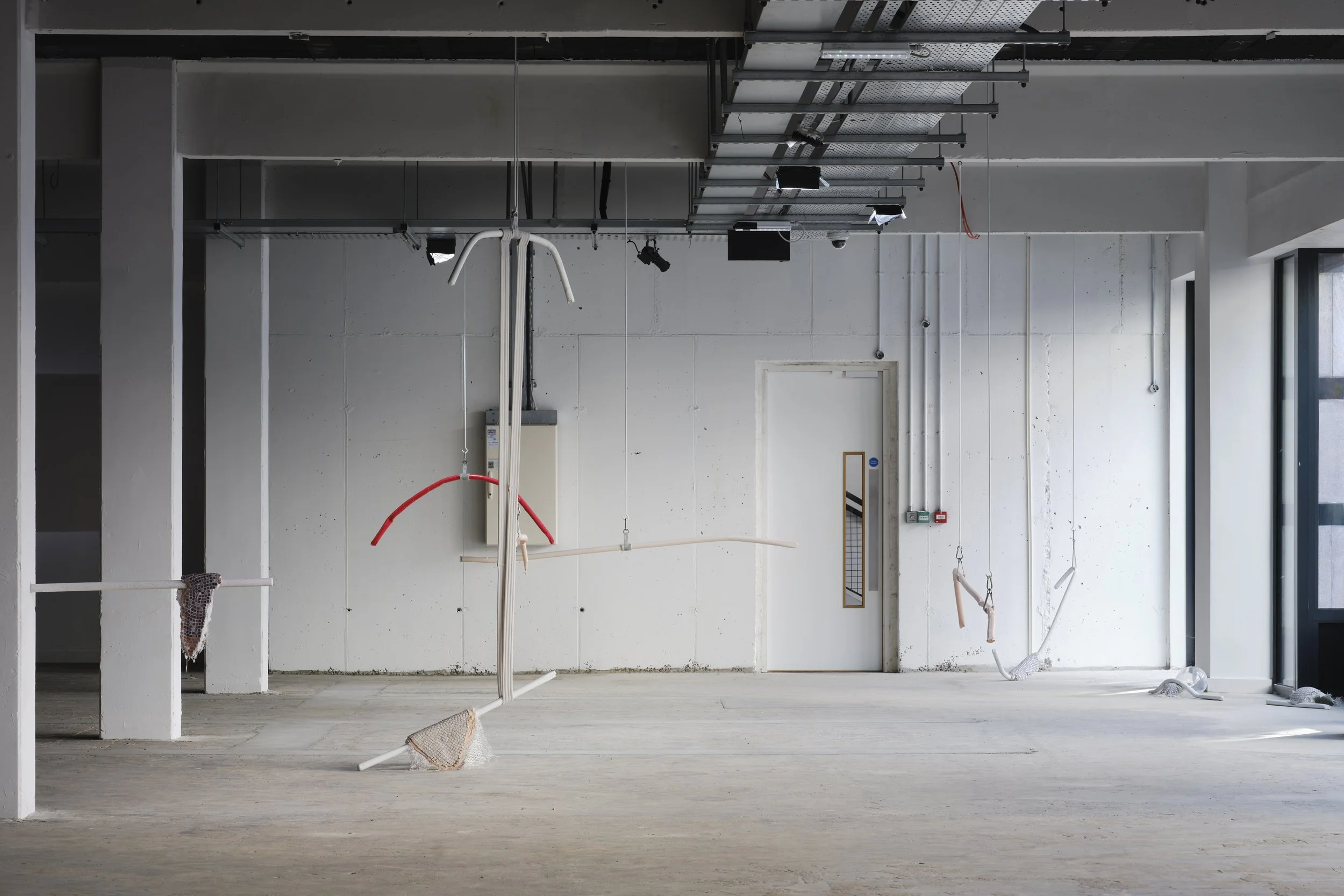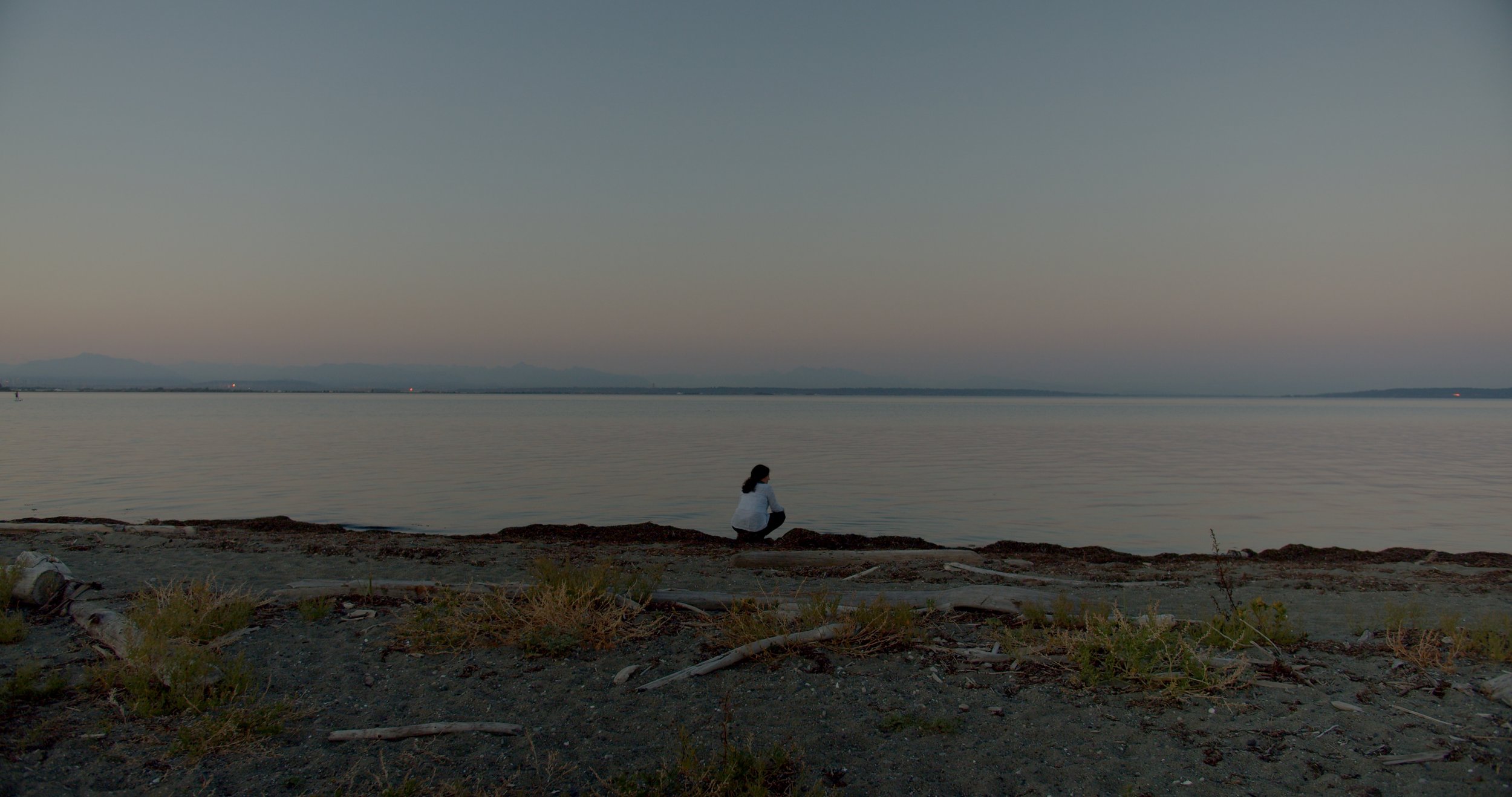Caroline Jane Harris
Elise Rasmussen
Judith Dean
Kameelah Janan Rasheed
Nicoline van Harskamp
Tabitha Soren
Caroline Jane Harris
Caroline Jane Harris (b. 1987, UK) lives and works in London. Her work hybridises traditional, historic techniques with digital technologies to pursue questions around materiality and perception in the Information Age. Intending to serve peace through meditative acts, her artworks go against the grain of speed and automation as an antidote to our fast-paced world.
Through manual processes, she forges a relationship between paper, interventions and the audience. With a scalpel she intricately cuts-out digital prints in ‘bitmap’ matrixes, embedding minute traces of the artist’s hand, turning two-dimensional prints into three-dimensional layered pictures that index both the human and non-human actors involved in the process.
Chosen subjects are images sourced – from personal archives, online videos, websites, found books and analogue photographs – to collapse and construe time, dimensions and media. The works offer up an arena for a slow, exploratory engagement to examine contemporary habits of seeing through critical acts of looking.
Elise Rasmussen
Elise Rasmussen is a research-based artist working with lens-based media. Her work for TULCA, in the Valley of the Moon investigates the paradoxes of scientific developments and ecological innovations, linking together rare mineral deposits in Chile’s Atacama Desert, food production, chemical warfare and the environmental toll of green energy. The work centres around current trends in electronic and electric vehicle industries and how this green revolution is fed by natural resources from fragile ecosystems, such as the Atacama; a site that has a long legacy of being exploited for its mineral wealth. The piece comments on what is gained and lost in the name of technological progress, questions who benefits from our current systems, and contemplates the many complexities of the climate crisis and the use of finite resources in our global world.
Judith Dean
Judith Dean works across installation, sculpture, performance, video, online projects, and more recently painting to negotiate the pictorial space as site. Experimenting with painting for several years, in 2017 Dean began practising with Chinese brushes and with her non-writing hand started attempting to write the image through painting, addressing singularity, framing and authorship, balancing figuration and abstraction, playing with divergent perspectives, blind alleys, dead ends, shifting horizons.
Kameelah Janan Rasheed
New York-based artist, writer, and educator Kameelah Janan Rasheed is known for work that takes an experimental approach to narrating Black experience. Working across a range of media, Rasheed often conceives exhibitions as pedagogical experiences with the power to explore conflicting histories, hidden narratives, archives, memory, and public space.
Working across a range of media, forms and contexts, Rasheed takes an experimental approach to the arrangement of letters, words, sentences, shapes, tones and textures. Her work frequently engages with the poetry, politics and pleasures of approximation as well as (mis)recognition, translation, privacy and dirty data.
A believer in the generative qualities of unfinished work, Rasheed creates iterative and provisional projects. These include publications, poetry, prints, digital archives, lecture-performances, library interventions, performance scores and sprawling, ‘architecturally-scaled’ xerox-based collages.
Nicoline van Harskamp
Nicoline van Harskamp is an artist based in the Netherlands, whose work considers acts of language and solidarity. She is the Professor for Performative Art at the University of Fine Arts in Münster, Germany.
Her work, Contagious Speech is a video installation about the altered roles of proximity and virtuality in spoken exchange, and the possible effects of this on language variety and language dominance. The coronavirus pandemic, with its sudden transition from ‘contaminating’ face-to-face speech, to streamed online speech, seems to have sped up this process. What effects does talking to a screen have on our voices? Are we the owner of our voices when we’re online? Why don’t automated voices breathe?
Contagious Speech is comprised of a video essay based on interviews with, among others, Natural Language Processing experts, speech therapists, voice-over artists, an ICU medic, a gospel singer and a beat-box artist.
Tabitha Soren
Tabitha Soren (b. 1967, Texas) is an artist whose work is concerned with contemporary photographic culture and the intersection of psychology, culture, politics and the body. Her work, Surface Tension (2013-2021) isolates one of the most intimate layers of our daily experience: the place where our warm animal bodies collide with the machine’s cold and boundless knowledge of the world.
Created by shooting the grime, oil and debris that accumulates on her iPad with a large format camera, the vigorous and expressive gestures on the surface of Soren’s images reflect the conflict between reality and fiction, and between our embodied selves and our online, mediated lives.
Soren is a Peabody Award winning journalist who worked with MTV, CNN, ABC News, and NBC News before shifting her visual arts practice from 30 video frames a second for television to single frame photographs.













